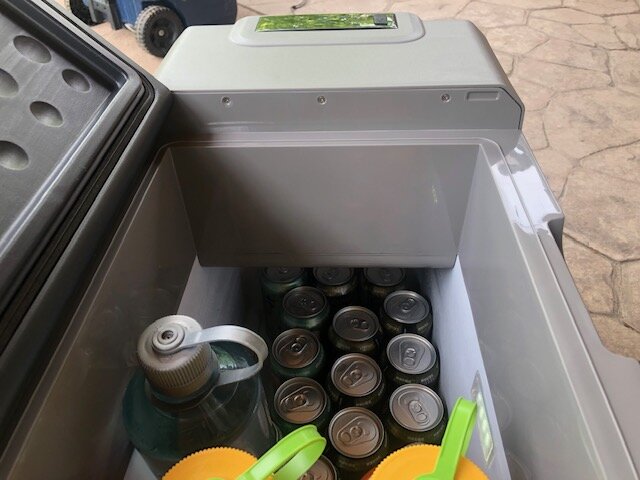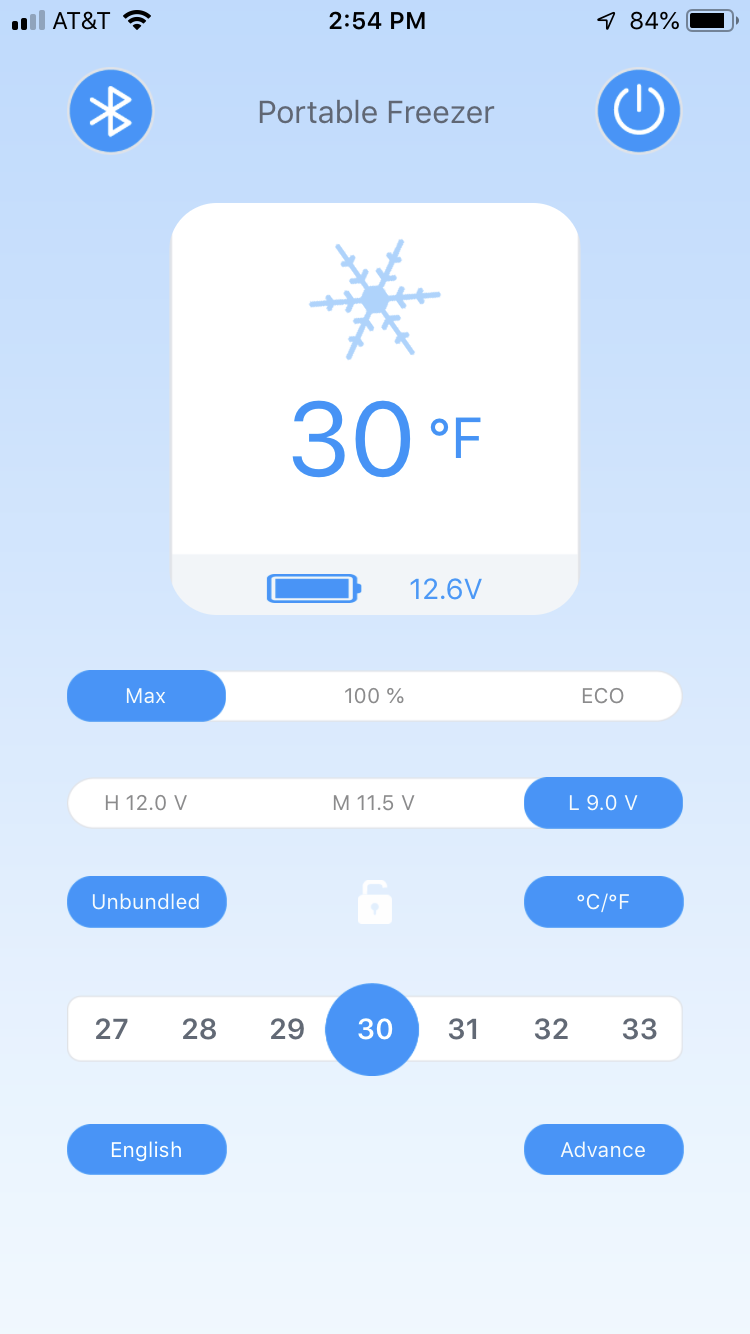Lion Coolers
November, 2019 impressions of the ACO Solar fridge/freezer, aka Lion Cooler
I have always been drawn to different approaches and solutions to the challenges we face as we build up and modify our vehicles, and in some ways it’s become one of the things I am known for in this little hobby we all share. So as I further develop new products and introduce new product lines at Gamiviti, a big push is to stay unique, knowing there’s little value in a me-too approach competing only on price. This approach has become a pillar of success here, and something our friends and customers have come to expect from us. So that approach remains a core value through all the various small business hats I wear including designer, consultant, fabricator, and occasional influencer.
Now most of us agree on the benefits of having a powered refrigerator in our rigs; no ice, no mess, take the mustard from the kitchen to the truck, go camping, bring the mustard back into the kitchen. One of my big contentions has always been the benefits are not limited to out on the trail or some extended overlanding expedition, but in everyday life with the ability to get groceries at 11:00am on Tuesday as you prepare for the weekend, or just having cool drinks around all the time. We take this for granted sometimes only to be reminded just how cool it is when bringing another kid home from a soccer game, who marvels at how he’s just been handed a cool sports drink from a hot car. Yeah fridges are cool, pun intended.
So imagine my delight in June 2019 when I met the team from ACO Solar, who presented me with the first ever solar-powered portable fridge/freezer. Now you may be thinking your fridge is already solar powered… I mean, you’ve got the panel set up, the charge controller hooked to the truck, which powers your battery, which powers your fridge right? Correct, but these new Lion Coolers bring all of that internally, with built-in battery and built-in charge controller. So it runs completely stand-alone, even outside of the house or vehicle. No one else in the overlanding world has seen this... ok sweet what a great opportunity!
Excited, yet skeptical, I placed my first order and took delivery of their two most popular sizes, the 30 and 40 liter. I also picked up their recommended 90w foldable solar panel, which will plug directly into the fridge. I then set out to attempt to defeat the manufacturer’s claims, knowing that if I don’t uncover the truth first, the market will, and I’m big on setting realistic expectations and under promises. I mean, how well could these things really work? My reputation as a fridge/freezer connoisseur hanging in the balance, I set out to put these through their paces, using an approach that has transitioned my relationship with ACO from customer to consultant, as they are now looking to me for product development ideas and feedback, something I am happy to do. So yes I have already shared this feedback with their engineers, and am pushing them to implement a lot of my recommendations.
Now I’ve owned and used portable fridge/freezers for about 15 years now, units including Engel, Edgestar, and Dometic, and have experience on trips with others’ ARB, Snomaster, and National Luna units. Not enough space to list out all the similarities and differences, but point being I feel fairly well qualified to do some fridge testing. My testing was done in 3 main phases, which we’ll refer to as the back patio, Lake Powell, and Rocky Mountain Overland Rally. The back patio test involved a full 40L fridge running stand-alone, powered only by its own battery and solar panel. Lake Powell took the same equipment on a houseboat for a week. And then a similar test at the RMOR, using the smaller 30L. The back patio was the most focused, with data recorded hourly on fridge temps and battery condition, the two camping trips were slightly less scientific, yet in the end the three tests combined led us to some fairly solid conclusions. Oh, and may as well add a fourth test, in that we’ve had one of these installed in our GX470 for 4 months now, being mistreated whenever possible. Here’s what we learned:
· Yes these fridges will perform as intended, if you keep some external conditions optimized. The fridge will run for at least a few hours in the hot sun on battery power alone, up to a full day if inside a cool house.
· The foldable solar panel is enough to charge the fridge battery during the day, if repositioned occasionally to be in the direct sun, and best if the fridge is kept in the shade.
· The fridges work best when full of cold things, and the smaller fridges work better than the larger ones- really no different from every other portable fridge/freezer out there.
On the back patio, the fridge died on day 4… meaning it ran for 3 days, but on the morning of the 4th it was out of power, and the battery pack’s power was too low to be brought back from the solar panel alone. I was pushing for defeat here, seeing what would happen if the fridge was left in the sun at times, solar panel allowed to get behind a tree, etc., really wanted to get a feel for how much of these variables I needed to control. In Lake Powell we saw similar performance, but were able to keep the fridge alive with the occasional boost from 110v- the houseboat group we were with would fire up the generator in the mornings and evening for about 30 minutes to make coffee, run the AC, so I took the liberty of getting a battery boost when that was available. Without that, and we’d have seen fridge power ending around day 3 or 4, like on the back patio, but with the periodic 110v boosts we were able to last the week.
The best test was at the RMOR using the smaller 30L fridge, where we were able to continually move the fridge into the shade, and reposition the solar panel into the sun. This worked so well I found myself with “extra” power… with a fridge battery topped off by 1:00pm, I was even swapping batteries around to charge a second. So yes if you are ok with a little project, you can keep these fridges running for multiple days only using the internal battery and solar panel.
I’ll spare you the data graphs, and instead break up the results and impressions in three categories, which I’ll call the good, the bad, and the reality.
The good
- Fridges are lightweight, and the integrated wheels and pull-up handle are surprisingly handy and well made.
- The controls and compressor are up high in the unit, different from most other fridges. So instead of that raised “not-so cold area” you see on other fridges, you have this dark basement of coldness underneath the control panel. On the 30L this area is tall enough for a normal 6-pack of cans, on the 40L this area is tall enough for a Nalgene bottle.
- The compressor being up high has the added benefit of the venting being up high at the top, not down in the corners where it’s so easily blocked by your other gear. This is real benefit.
- The phone app is pretty cool- more functions than we have seen with the Dometic app, it’s faster and more responsive also.
The bad
- The walls of the fridge are a little on the thin side, so much so that they feel a little cool to the touch. The unit would benefit from a more robust case, and/or the addition of an insulated bag. In the hot sun, the case starts to feel soft, even warping slightly.
- The door on the fridge doesn’t have any latch to it, instead relies on detents and tabs on the sides. So it’s possible to only partially close the fridge door, or have it get bumped open by a random cargo-area projectile.
- The case doesn’t have any attachment points to it, other than some plastic loops intended for straps on the back side. When securing this into a vehicle, the only way is to put a ratchet strap over the top of it, which then covers access to the battery. The result is a little more “Red Green” than a lot of us like to have in our rigs. (Sorry kids, you may need to google that one).
- To really run “off grid” with only solar power, you will need to periodically optimize both the fridge and solar panel conditions… if you let the fridge get too hot in the sun, or allow the panel to get in the shade, temps and voltages will quickly move in the wrong directions. Fine if you are only away for a few hours on a hike or bike ride, but you couldn’t leave it alone all day long.
- The 12v cigarette lighter cord has way too much current loss. Needs to be wired directly to a distribution panel, or solid connection to work properly. But I’d say the same thing about the other fridges out there also, so often that stock cord is the weak point.
- This fridge will overheat if left in hot conditions. Twice I’ve come back to the car to see an “F5” error on the display, indicating an over-temp condition. It’s only temporary though, and corrects itself within minutes once the interior of the truck is cooler and better ventilated. So just a note to keep the back window cracked open if you have to park in the hot sun. I have been told this is being addressed through a software upgrade. My tip here fridges are like dogs- they like cool shady areas with lots of ventilation.
The reality
- It works! It’s a fridge in your car, like the other ones. And the added battery and solar charging capabilities bring some new benefits. Also the $800-$900 price points make it one of the more frugal fridge purchases these days.
- It was a challenge at first to get used to the Lithium Ion battery voltage numbers. Being so used to 12v setups I’m programmed to think over 12.5 is pretty good, anything under 11.8 or so is bad, etc. These batteries top out at 12.6, and will continue to run the fridge until 10.0v. So it was unsettling at first to see 11.2v on a battery and not panic... took some getting used to.
- Plugged into 12v in the truck this fridge runs as well as the others, once it’s more “hardwired” into direct power. In fact, I’d even say a little more efficiently… I like to look at my 2nd battery voltage in the morning after the fridge has been on all night, with other fridges that number is usually 12.2-12.4, but with the ACO fridges I routinely see numbers in the 12.4-12.5 range… indicating I used a little less power last night.
- Putting a towel over the main part of the fridge really helps it stay cool- only really necessary when you’re trying to run off-grid for extended periods, and when connected to a running vehicle don’t worry about it. But just something to note, particularly if you’re getting heat radiating down from your awning. Will be improved with a new case and/or addition of an insulated back, both slated for release by Q1 2020.
- No integrated tie-down points makes strapping it into the vehicle a little more difficult, and once installed becomes more of a barrier to removing it. I designed a solution using a strap over the top and blocks in the back corners and front, which gets the job done well but is another project. A customer in Colorado Springs had a shop 3D Offroad make a mount inspired by this design, which looks great and works well.
ACO Power has a good history in the solar world, and they certainly know their way around the different solar panels and charge controllers. Their portable fridge/freezer market has been most popular in the boating world, being wheeled around big ski boats and cabin cruisers. They are hoping to jump into the overlanding market, and for early adopters have a product line today that brings some new benefits. We likely use these opposite of their other customers though; the others have this fridge in the house or garage most days, then only occasionally bring it to the car or boat, so the portability tends to outweigh the need for durability and ability to tie it down. But like you I’m exactly the opposite- fridges live in the truck for the most part, so new uses outside the vehicle have yet to be realized, and given my current build I haven’t fully needed the other advantages of the battery and solar, as the rig we installed this into already had a second battery and 100w solar panel installed. I think their next Gen units will be a lot better, once they resolve some of the case issue and make it more “overlandy.”
In conclusion I’d say these new Lion Coolers are a viable alternative to the other portable fridge/freezers out there at similar price points, so if you’re in the $1000 and under market, it’s worthy of consideration. They come with a one-year manufacturer’s warranty, like the others, with similar compressors to the others as well. I can see a case being made for using this in multiple rigs, or in a rig without a second battery, or a rig that only has switched 12v power going to the cargo area. Being able to run on battery-only makes it possible to bring this to the sidelines for a soccer game, or onto the golf cart with you, out onto the deck for a party, or inside your hotel room at night, all benefits that may be useful someday but none that I’ve really used. Plus, given that I’ve got it strapped down it’s just a little more of a project than it’s worth to me to pull it from the vehicle. If you see a use for the added portability and standalone features, that may be enough to convince you to try one of these guys out.
I’m going to continue to use these fridges, and offer demos to folks wanting to see more. I’m hopeful the launch of the next gen lines will incorporate a lot of the feedback I’ve provided, and bring us an even better product to consider in the future.







